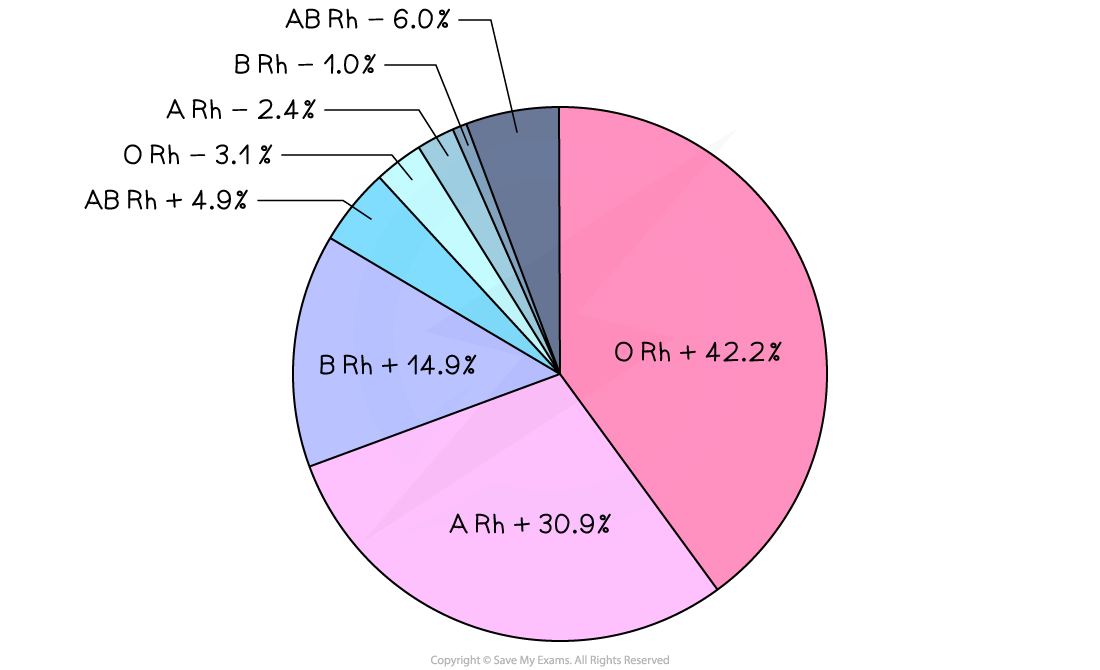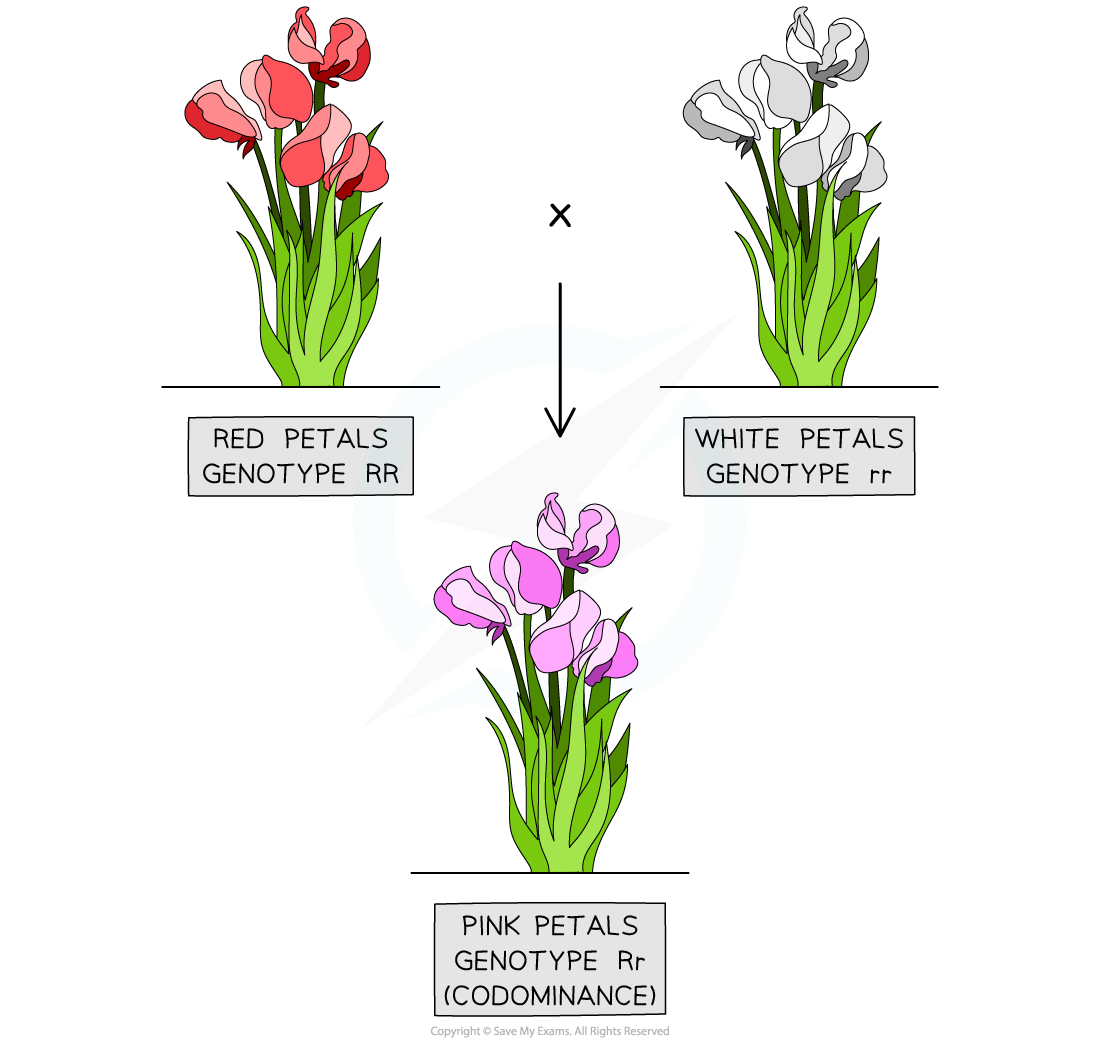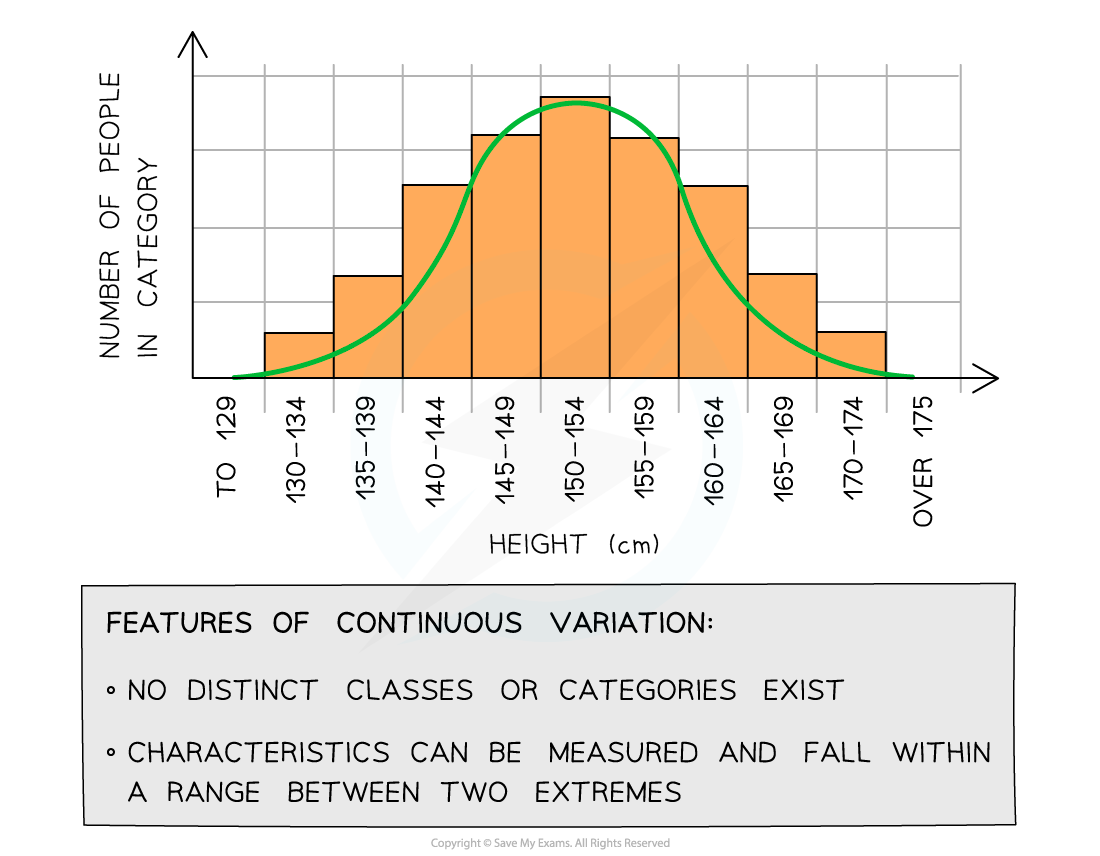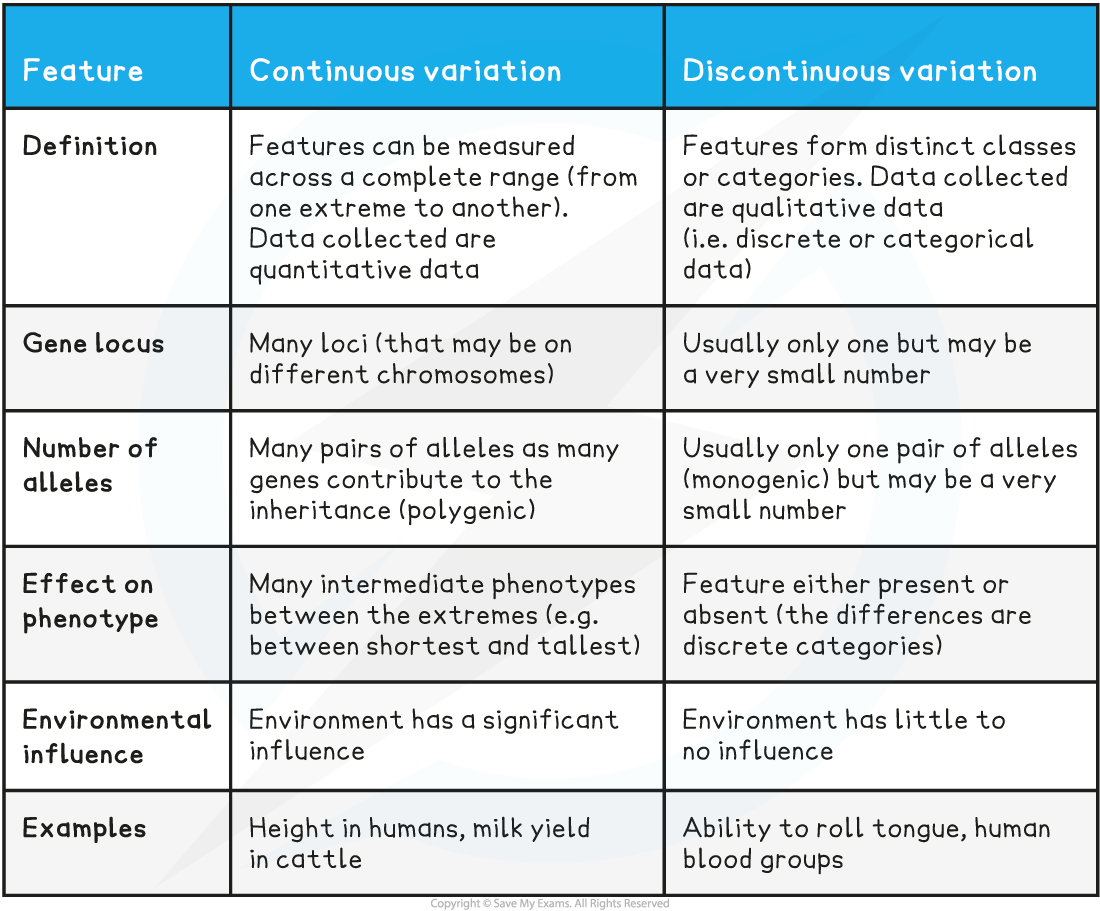Types of Variation
- The ways in which organisms differ from one another is called variation
- Variation occurs between species
- In fact, species are classified based on differences between their respective members
- This is called interspecific variation
- Variation can occur within the same species
- Between different individuals or groups of individuals
- This is called intraspecific variation
- This suggests that only one gene is involved in governing discrete variation
- This is called monogenic inheritance
Variation can be discrete or continuous
- Discrete variation is an example of intraspecific variation
- Individuals fall into two or more clear-cut categories with no overlap or in-between categories
- Blood group is an example of discrete variation
- All human blood is either group O, A, B or AB, each with a Rhesus factor (+ or -)
- This gives just 8 distinct blood groups

Worldwide A, B, O blood group distribution by percentage, 2019
(data varies regionally with ethnicity)
- The petal colour of snapdragons is a discrete variable; either red, white or pink with no in-between colours
- Discrete variation is sometimes referred to as discontinuous variation, in contrast to continuous variation

Snapdragons display 3 main petal colours: red, white and pink, determined by a single pair of codominant alleles
This is an example of discrete variation that is solely due to genetic factors
Causes of discrete variation
- This type of variation occurs solely due to genetic factors
- The environment has no direct effect
- Phenotype = genotype
- At the genetic level:
- Different genes have different effects on the phenotype
- Different alleles at a single gene locus have a large effect on the phenotype
- Remember diploid organisms will inherit two alleles of each gene, these alleles can be the same or different
- A good example of this is the F8 gene that codes for the blood-clotting protein Factor VIII
- The different alleles at the F8 gene locus dictate whether or not normal Factor VIII is produced and whether the individual has the condition haemophilia
Continuous Variation
- Continuous variation occurs when two or more genes affect the final characteristic
- For example, height in humans is determined by many genetic factors:
- Bone length
- Skeletal muscle structure
- Ability to absorb food substances effectively
- Hormone production
- …As well as environmental factors like diet, exercise, prenatal nutrition, lifestyle etc
- Most characteristics are determined by more than one gene - a polygenic characteristic
- Even grouped data like shoe size appears to be discrete but in fact, peoples' feet vary continuously in size
- Shoe size is merely a practicality for shoe manufacturers, who cannot make exactly the right-sized shoes for everybody
- Continuous variation in birth mass results in the population displaying a normal distribution (bell-shaped curve)
- Of course, environmental factors can affect birth mass, eg. mother's diet, presence of a twin, smoking etc
- Continuous variation occurs when there are quantitative differences in the phenotypes of individuals within a population for particular characteristics
- Quantitative differences do not fall into discrete categories like in discontinuous variation
-
- For example, the mass or height of a human is an example of continuous variation
- Instead for these features, a range of values exist between two extremes within which the phenotype will fall
- The lack of categories and the presence of a range of values can be used to identify continuous variation when it is presented in a table or graph

Graph showing population variation in height: an example of continuous variation with quantitative differences
Genetic basis of continuous variation
- This type of variation is caused by an interaction between genetics and the environment
- Phenotype = genotype + environment
- At the genetic level:
- Different alleles at a single locus have a small effect on the phenotype
- Different genes can have the same effect on the phenotype and these add together to have an additive effect
- If a large number of genes have a combined effect on the phenotype they are known as polygenes
Comparison of Continuous and Discontinuous Variation Table

Environmental Influence & Variation
Polygenic traits such as human height may also be influenced by environmental factors
- Many environmental factors can affect the intraspecific variation displayed by an organism, including
- Diet
- Lifestyle
- Exercise
- Exposure to sunlight eg. tanned skin
- Availability of soil minerals in plants
- Human intervention eg. pruning plants, neutering animals
- Fashion, individual preference
- Native language and dialect (based on where an individual is brought up)
- These traits and differences have been observed in identical twins who were unfortunate enough to have been separated at birth
- Not a practice condoned in the 21st century, but was once considered a valid investigative method
- Individuals displayed distinct phenotypic differences based on their diet and lifestyle differences
